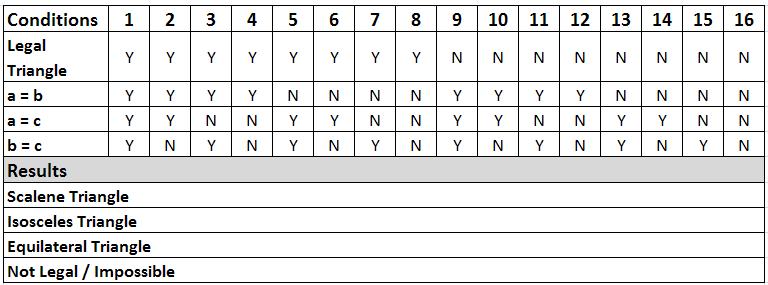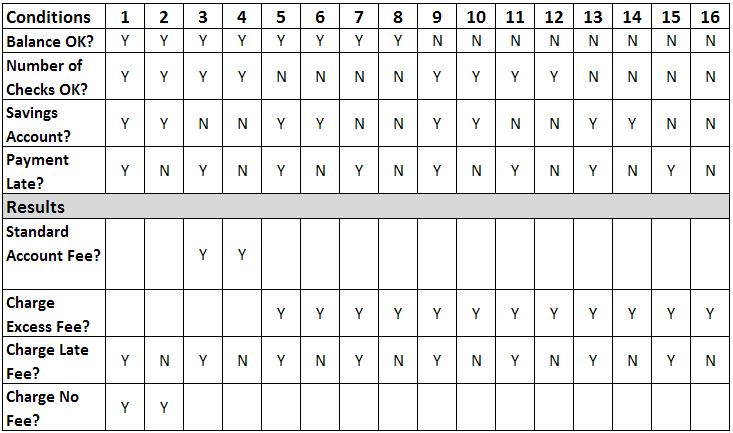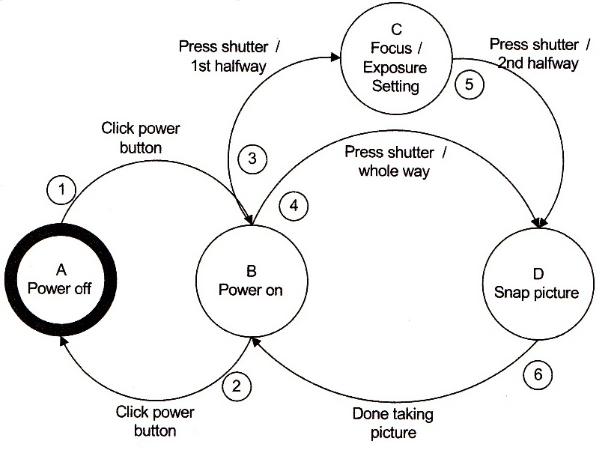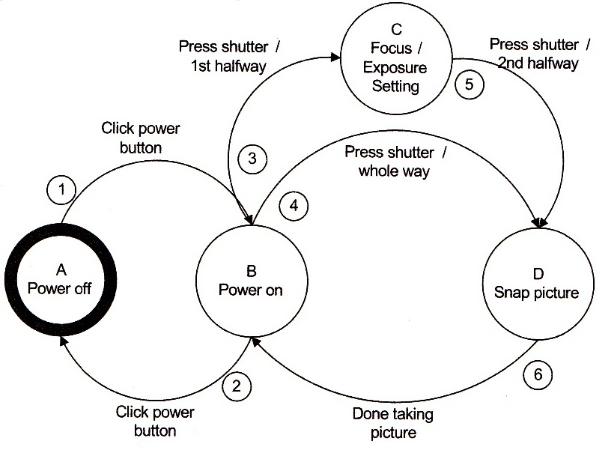ISTQB Advanced Level Test Analyst Exam -Scenario Based Sample Questions: Q. 11 to 20
Deep study of this set of 53 questions out of which majority of them are scenario based & shall be of great help in getting success in ISTQB CTAL Advanced Level Test Analyst Exam.
All these questions are based upon the latest ISTQB Certified Tester Advanced Level Syllabus V 2007.
Set of 10 Questions (Q. 11 to 20)
Correct Answers of earlier Q. 1 to 10 are at the end of this page:
Q. 11: You are testing a data input screen for a software package. The data that is collected is used in calculating the taxes for the organization being processed. You are at the analysis and design
phase of your lifecycle, going field by field trying to determine the minimum number of test cases you need to give you BVA (boundary value analysis) coverage. Your stated objective is to perform both positive and negative equivalence class testing on the screen. You have an automated process that %will automatically test all field values other than the correct data type: that is, if the field requires an integer, the automated program will test chars, symbols, spaces, real numbers, nulls, etc. Therefore, you arc going to leave all of those types of negative test cases out of your design. One field you must consider is the customer type field, which requires a single integer input. For historical purposes, there are five different type customer classifications (I, 2, 4, 5, 6). What is the minimum number of tests you must design for this field to achieve the desired coverage?
A. 2
B. 5
C. 6
D. 8
<<<<<< =================== >>>>>>
Q. 12: A bank has several different levels of awards / penalties that it showers on its customers. Both are based on the amount of dollars in customers’ various accounts. Assume that you have a test client with five (5) different accounts that are subject to these rules. Different types of accounts are calculated differently, even though the trigger amounts are the same for all accounts. The rules for any given period are as follows:
# Negative balances are penalized by a fee.
# Balances at or below $25 ate penalized by loss of interest.
# Balances at or below 51,000 are penalized by low interest.
# Balances above $1,000 get full interest.
# Balances above S100,000 get full interest and a 5200 interest bonus.
Assuming that we are interested in equivalence class testing, how many test cases do we need minimum for thin client?
A. 4
B. 5
C. 25
D. 40
<<<<<< =================== >>>>>>
Q. 13: Consider the bank scenario as defined in question 12 above. Assuming that calculations are made to the cent, and that we are interested in boundary value testing, what is the minimum set of test values we would need for an account?
A. (-0.01; 0.00; 24.99; 25.00; 999.99;1,000.00; 999, 999.99; 100,000.00)
B. (-0.01; 0.00; 25.00; 25.01;1,000.00; 1,000.01;100,000.00;100,000.01)
C. (0.00; 0.01; 25.00; 25.01; 1,000.00;1,000.01;100,000.00;100,000.01)
D. (-0.001;0.001;24.999;25.001;999.999;1,000.001;999,999.999;100,000.001)
<<<<<< =================== >>>>>>
Q. 14: There is a decision table to help us develop a solution to Myers’s triangle test problem. A piece of software inputs three integer nun1-bers. These numbers represent the lengths of the sides of a geometric figure; a, b and c. The values are compared to see if they actually represent a legal triangle.
A triangle with three equal sides is called an equilateral triangle. One with two equal sides is called an isosceles triangle. One with no equal sides is called a scalene triangle. Using what you know of triangles and decision tables, collapse the given decision table and determine the number of tests needed to achieve minimum coverage criteria.

A. 6
B. 7
C. 9
D. 12
<<<<<< =================== >>>>>>
Q. 15: Refer to the following decision table. Which of the following is correct based on what you see in the decision table?

A. There are no non-exclusive rules in this decision table.
B. There is one non-exclusive rule: Balance OK?
C. All of the conditions in the decision table are non-exclusive rules
D. There is one non-exclusive rule: Payment late?
<<<<<< =================== >>>>>>
Q. 16: You are going to be testing a small camera. To keep it simple, there are only two buttons: the power button and the shutter button. The camera will act as an automatic focus and exposure camera when the shutter button is pressed halfway and then stopped for 0.4 seconds before the button press is completed. If the shutter button is simply pressed all the way without stop-ping, the camera will act as a single exposure, infinity focus camera.
Given the following state transition diagram, how many rows would its matching state transition table contain?

A. 24
B. 20
C. 18
D. 6
<<<<<< =================== >>>>>>
Q. 17: Refer to the scenario as defined in question 16 above.
Given the following partial switch coverage table, how many 1-switch segments would there be?

| 0-Switch 1 Switch | ||
| A1 | ||
| B2 B3 B4 | ||
| C5 | ||
| D6 | ||
A. 5
B. 7
C. 9
D. 11
<<<<<< =================== >>>>>>
Q. 18: The following C code function will allow a browser to Connect to a given website.
#include
#include
#include
int main ( )
{
HINTERNET initialize,Connection,File;
DWORD dwBytes;
char ch;
Connection = InternetConnect(Initialize,”www.xyz.com”,
INTERNET_DEFAULT_HTTP_PORT,NULL,NULL,
INTERNET_SERVICE_HTTP,0,0);
File = HttpOpenRequest(Connection,NULL,”/index.html”,
NULL,NULL,NULL,0,0);
if (HttpSendRequest (File,NULL,0, NULL,0))
{
while(InternetReadFile(File,&ch,1,&dwBytes))
{
if(dwBytes != 1)break;
putchar(ch);
}
}
InternetCloseHandle (File);
InternetCloseHandle (Connnection);
InternetCloseHandle (Initialize);
return 0;
}
What is the minimum number of test cases that would be required to achieve statement coverage for this code?
A. 1
B. 2
C. 4
D. 6
<<<<<< =================== >>>>>>
Q. 19: Given the following snippet of code, which of the following values for the variable Counter will give loop coverage with the fewest test cases?
�
for (i=0; i<=Counter; i++) {
Execute some statements;
}
A. (-13,0,1,795)
B. (-1,0,1)
C. (0,1,1000)
D. (-7.0.500)
<<<<<< =================== >>>>>>
Q. 20: In a module of code you are testing. you are presented with the following if() statement. How many different test cases would you need to achieve multiple condition coverage (assume no short circuiting by the compiler)?
If (A && B || (Delta < 1) && (Up < Down) || (Right >= Left)) {
Execute some statements;
}
Else {
Execute some statements;
}
A. 24
B. 32
C. 48
D. 128
Correct Answers of the above Questions
Full Database of All Question for Advanced Level Test Analyst and Technical Test Analyst Exams
Correct Answers to Earlier Questions – Q.1 to Q 10 are as under:
| Question No. | Correct Answer |
| Q. 1 | C,D |
| Q. 2 | C |
| Q. 3 | B,C |
| Q. 4 | A |
| Q. 5 | B |
| Q. 6 | D |
| Q. 7 | B |
| Q. 8 | C |
| Q. 9 | C |
| Q. 10 | A |

An expert on R&D, Online Training and Publishing. He is M.Tech. (Honours) and is a part of the STG team since inception.

Hi,
I am working through the CTAL test analyst scenario based questions and I am puzzzled with Q17. I have the following 1 switch combinations:
A1B2
A1B3
A1B4
B2A1
B3C5
B4D6
C5D6
D6B2
D6B3
D6B4
The correct answer is 9 but I have counted 10; please can you explain where I am going wrong with this.
By the way your site is so helpful with my prep for the exam.
Thanking you in advance.
Anne
Hi,
For question 17 my answer is also 10 which is not listed.
Kindly confirm the correct answer.
Can anyone please explain question 12 to 20